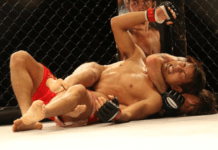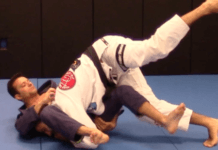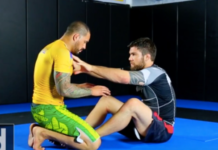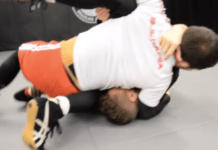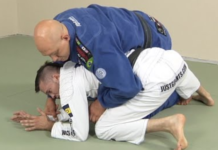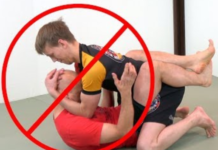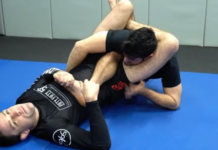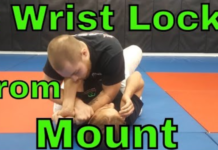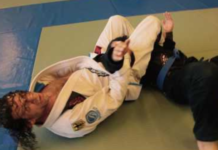The chokes are very effective moves in BJJ that you can use in order to choke out your opponent. When applied correctly, they will put your opponent to sleep in a matter of seconds. This is the main reasons as to why their use is so widespread in the MMA and BJJ. A crank, on the other hand, is a move that you will use in order to twist your opponent’s head and neck beyond the range of motion that they usually move in. That being said, we have for you today a move that falls in between on the spectrum of chokes and cranks. We’re talking about the notorious Peruvian necktie.
Peruvian necktie Origin
There is a reason as to why this move is called Peruvian necktie. The reason is that a Peruvian person invented it. Tony De Souza, a veteran in the premier MMA fighting organization, the UFC, invented this submission move while working under BJJ black belt Andre Pederneiras, back in the day. People quickly caught up to the effectiveness of this move and they started to implement it in their game. The Peruvian necktie is a very popular submission move that’s widely used around the world in the Jiu Jitsu and MMA.
Performing the Peruvian necktie
The easiest way to perform this move is from the sprawl position. Luckily, this is a position that you will come to often in your BJJ career as your opponent shoots for a single or a double-leg takedown. All you need to do is sprawl on top of your opponent and pin him down to the mat with your chest over his torso. And now you have the basic setup from which you could continue to execute the Peruvian necktie.
What you’ll want to do from here is do an over-under grip on your opponent. You slide one arm underneath your opponent’s neck and under his armpit, and you use your other arm’s hand to grab your first arm’s hand. Different grips work here – the most widely used grip for this position is the gable grip.
After you have done this, you will have better control over your opponent. What you need to do now is crouch down on your feet while still keeping the over-under grips on your opponent and use your feet in order to get closer to him. After this, you need to fall down at a slight angle towards the side where your grip is at.
Now, depending on the level of your flexibility, you may do one of two things here. You can either put your leg between your opponent’s legs or you could put your leg over your opponent’s back if you’re flexible enough. The second move is much more effective than the first and it will help you apply a devastating level of pressure.
In the end, all you need to do is apply the pressure. Go slowly while trying this move out. You may be surprised to see how viciously your opponents will tap out. The Peruvian necktie is no joke. The pressure that you can apply from the move can be devastating. Again – the move can be a choke and a crank. You should never underestimate it.
Once you get the gist of it, the Peruvian necktie is not that complicated move. You just need to practice it until it becomes second nature to you. Likewise, by reading these instructions chances are that you have already visualized this move in your head. But if you wish to see a demonstration of this move, then we suggest that you see:
Defending the Peruvian necktie
If you know what your opponent is about to do, then it’s rather easy to block his Peruvian necktie. However, you need to act very quickly as, once your opponent starts executing the move, you’re seconds away from being choked out. All you need to do is “scissor out” your legs to the side. This is much like performing the Kesa Gatame move when you’re in top side-control. It’s very simple to do and it will effectively neutralize your opponent’s Peruvian necktie. If you want to see a demonstration of the Peruvian necktie block, you could see
In conclusion
The Peruvian necktie is not difficult to learn. However, different people have different experience with it. Some say that they have learned right at the outside. And some still struggle to implement it after a long training. That being said, you will be able to see for yourself if this move suits your particular body type and BJJ game. The good thing about the Peruvian necktie is that it’s effective with and without a gi. What remains for you to do is try this move out in training and see if you like it.
Check also:
- Anaconda Choke – How to set up, Finish and Defend this Submission
- Darce Choke: Origin and Mechanism behind Choke
- Arm Triangle Choke: Variations and choke defense
- Ezekiel Choke: origin and technique application

